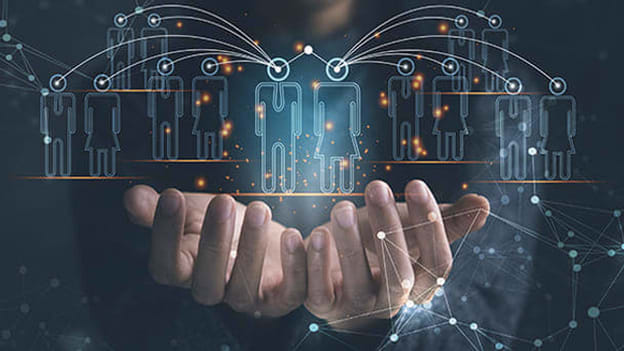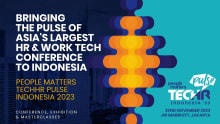It’s time to automate HR support on the channels employees prefer

A quiet revolution is happening at workplaces around the world. It’s unfolding under the radar because workforces have (and still are) experiencing so many massive changes due to the pandemic, but it’s important nonetheless because this hidden revolution has broad and lasting implications. Employees’ primary communication channel has changed, and that changes everything.
The first email was sent in the 1970s, and though email wouldn’t catch on for businesses worldwide until years later, it has been the official business communication channel for generations now. In the 2010s, platforms like Slack and Microsoft Teams gained popularity as internal communication tools, but email has maintained its hold as the official channel for ticketed help requests for HR and IT assistance.
That’s about to change, and HR departments that get in front of the shift and incorporate advanced technology like AI in support applications will be best positioned to improve efficiency and streamline operations as they meet employee needs. By communicating with employees on their preferred channels, HR leaders can improve the employee experience while preparing for a hybrid workforce.
Minimize Disruptions to Maximize Productivity
The pandemic forced businesses that could operate remotely to adapt to a work-from-home workforce practically overnight as they put safety measures in place to contain the spread of the virus. But business communication platforms like Slack and Teams allowed employees to continue to communicate with colleagues seamlessly from home.
That said, requests for HR or IT support typically require employees and the agent to leave the business communication platform to submit or respond to a request for help via the employee’s work email address. That interrupts the flow of the conversation, which can have a negative impact on productivity, both for employees asking for help and the HR and IT personnel who are providing support.
Technology that is compatible with popular help desk ticketing systems and knowledge base tools can eliminate the productivity hit on both sides of the equation by allowing end-users and support agents to manage help requests on Slack or Teams. But that’s just the beginning of the efficiency gains HR (and IT) can realize from handling support tickets through their company’s business communication platform.
Use AI to Automate Support and Make It Conversational
Employees have questions at every phase of the employment lifecycle. When they first come on board, they’ll have a ton of questions about HR policies and procedures, such as attendance and leave policies, how to activate direct deposit, where to go to download a paystub and much more. These are important questions, but they’re routine, and routine questions continue until the employee’s last day.
When HR professionals spend too much time on mundane tasks like answering routine questions, that’s time they can’t spend on more strategic work. This is where AI can streamline the support process and give HR leaders the gift of time. With AI-powered technology that enables support on Slack or Teams, HR can automate the process, using the company’s knowledge base to answer routine questions. That frees up time to focus on strategy, like optimizing the hybrid workforce.
So, if an employee asks HR “How can I download a paystub?” on Slack, the AI assistant tool would query the knowledge base and answer the question conversationally, providing instructions and deflecting the inquiry from HR’s workload. Ideally, the AI assistant would also allow employees to rate the response so that the AI tool can learn from outcomes and become smarter over time. This process also provides valuable data HR can use to enhance its knowledge base and deflect even more tickets.
With a conversational AI assistant tool that understands employee terminology and the way employees phrase questions, real-world experience indicates that up to 40% to 60% of IT and HR support requests can be deflected. When employees reach out with a query that isn’t a frequently asked question that can be auto-resolved, the AI assistant can escalate it to an HR professional for resolution.
Expectations for 24/7/365 Service
As consumers, we’ve come to expect prompt answers to our questions, and we want to receive information on the channels we prefer. That’s why so many customer support organizations now use AI and chatbots to provide answers to frequently asked questions. Those same expectations carry over into our roles as employees, so providing access to answers 24/7/365 improves the employee experience.
But always-on service isn’t always just a matter of meeting employee expectations that evolved from the consumer experience. It’s about acknowledging that not everyone works standard business hours. Shift workers who may not be awake during regular business hours need support too, and the less time they have to wait for a response, the more satisfied they are as employees.
Continuous service can also help HR smooth the way for a hybrid workforce in the post-pandemic world. It’s widely acknowledged by business leaders that there’s no going back to the “normal” of the pre-pandemic business environment. Employees and employers alike want to remake the post-pandemic workplace, and for many businesses, that will include flexible hours.
Convenience, Compliance and Digital Transformation
It’s important to keep in mind that providing convenient access to information is arguably as or even more critical than the information itself. When it’s difficult to access information, people are hesitant to ask questions, which prevents them from getting the answers they need. That’s why HR leaders should strongly consider providing a way for employees to get help via preferred communication channels.
No one understands the importance of employee engagement better than HR professionals, so giving employees an easy way to resolve frequently asked questions is an easy decision to make. With the right AI-enabled platform, HR can also gain another crucial benefit: an audit trail. By logging incoming issues and employee responses via AI, HR maintains compliance.
And finally, an AI assisted HR solution that’s compatible with Slack or Teams is a step toward digital transformation. The pandemic accelerated many organizations’ digital transformation roadmap because companies understand the importance of streamlining workflows so they can focus on tasks that are core to the organization’s mission. HR has a critical role to play in building a modern workplace, and automating support on the channels employees prefer to use is a step in the right direction.
















